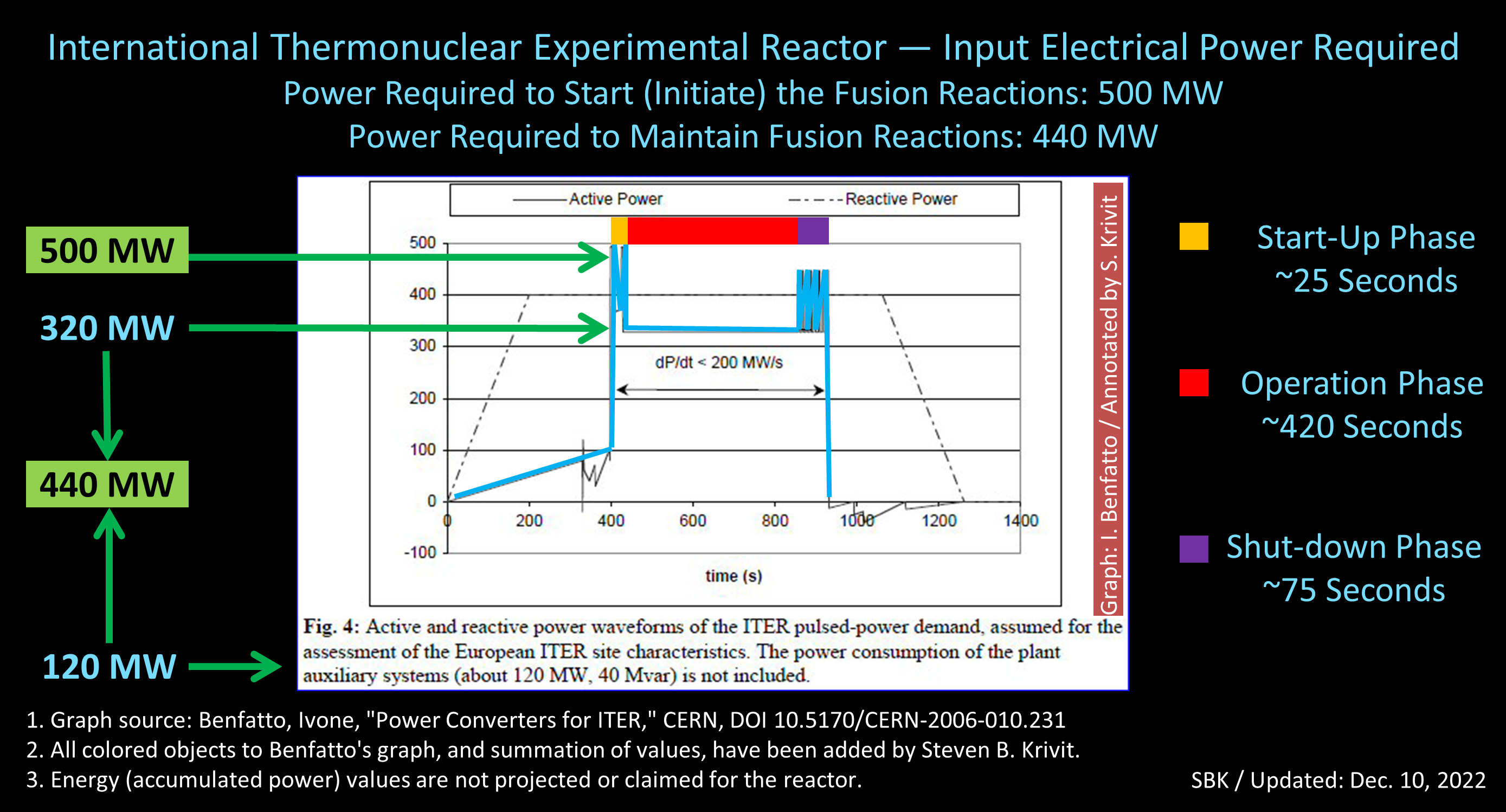ITER Organization Confirms 440 MW Electrical Input Requirement for Reactor
By Steven B. Krivit
Dec. 23, 2022
After six years, Laban Coblentz, the head of communications for the ITER organization, has confirmed to New Energy Times the accurate projected electrical input power requirement, 440 megawatts, needed for the ITER reactor.
We had asked Coblentz for this power value at the end of 2016, but he provided an ambiguous and inaccurate response. Through independent scientists, in the summer of 2017, we initially determined that the required electrical input power for the reactor was 300 megawatts, which we reported on Oct. 6, 2017.
440 MW
We later developed evidence that the projected required power rate was likely 440 megawatts. We determined this number based on our analysis of a graph published by Ivone Benfatto, the head of the Electrical Engineering Division for the ITER organization. Benfatto, however, did not respond to our request to clarify and confirm our analysis.
Earlier this month, we asked again. Under the direction of Pietro Barabaschi, the new director-general of the ITER organization, Coblentz confirmed that our analysis is correct.
The Falsehood
For many years, the common belief about the ITER reactor was that it is designed to produce 500 megawatts of thermal power while needing only 50 megawatts of electricity to operate.

This false understanding was the direct result of inaccurate and ambiguous claims by the ITER organization and other fusion experts.
For several years, New Energy Times informed Coblentz and Bernard Bigot, the former director-general of the ITER organization, about the false power claims on their organization’s Web site. Nevertheless, on July 28, 2020, under their direction, the ITER organization issued a press release claiming that, “if operated continuously and connected to the electric grid, [the 500 MW thermal output] would translate to about 200 megawatts of electric power, enough for about 200,000 homes.” (Source, Archive Copy)
The Facts
The 500-megawatt thermal output value was accurate. But the 50-megawatt value was a misrepresentation. It refers to only the injected thermal power that will be used to heat the plasma. The ITER reactor is designed for a net power gain across the plasma, not across the entire reactor. The “50 MW” and “500 MW” values always were associated with the plasma gain, but Bigot and Coblentz had said or implied that those values were associated with the overall reactor.
The Walkback
The false claim that ITER is designed to produce enough thermal power, if converted to electricity, to power 200,000 homes was consistent with the organization’s public communication until Barabaschi took over. For at least a decade, the ITER organization had promoted the project on Twitter as “a large-scale scientific experiment that aims to demonstrate that it is possible to produce commercial energy from fusion.” In an e-mail to New Energy Times, Coblentz walked those claims back further.
“ITER’s plant-wide power balance is not directly relevant to the anticipated power balance of any future commercial fusion machine,” Coblentz wrote.

Twitter handle for ITER organization, retrieved July 27, 2022
The Future
ITER is the most scientifically credible experimental fusion reactor on track to demonstrate the feasibility of large-scale fusion energy. As always, the public wants to know one thing: How close are we to practical fusion energy?
If ITER succeeds in its primary scientific goal, then the correlated result for the overall reactor will be a net loss equivalent to 220 megawatts of electric power.
Coblentz told New Energy Times that this is an unfair comparison because ITER is not designed for overall reactor power gain and because the design encompasses redundancies and additional test instrumentation that would not be used in a commercial reactor.
Perhaps ITER is not the way to a new, clean, unlimited source of nuclear energy.



